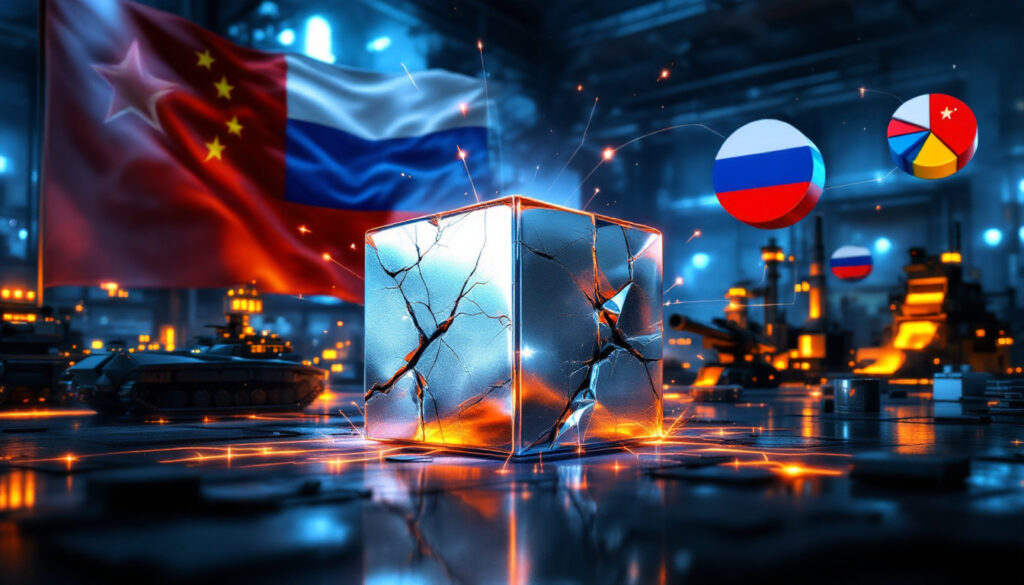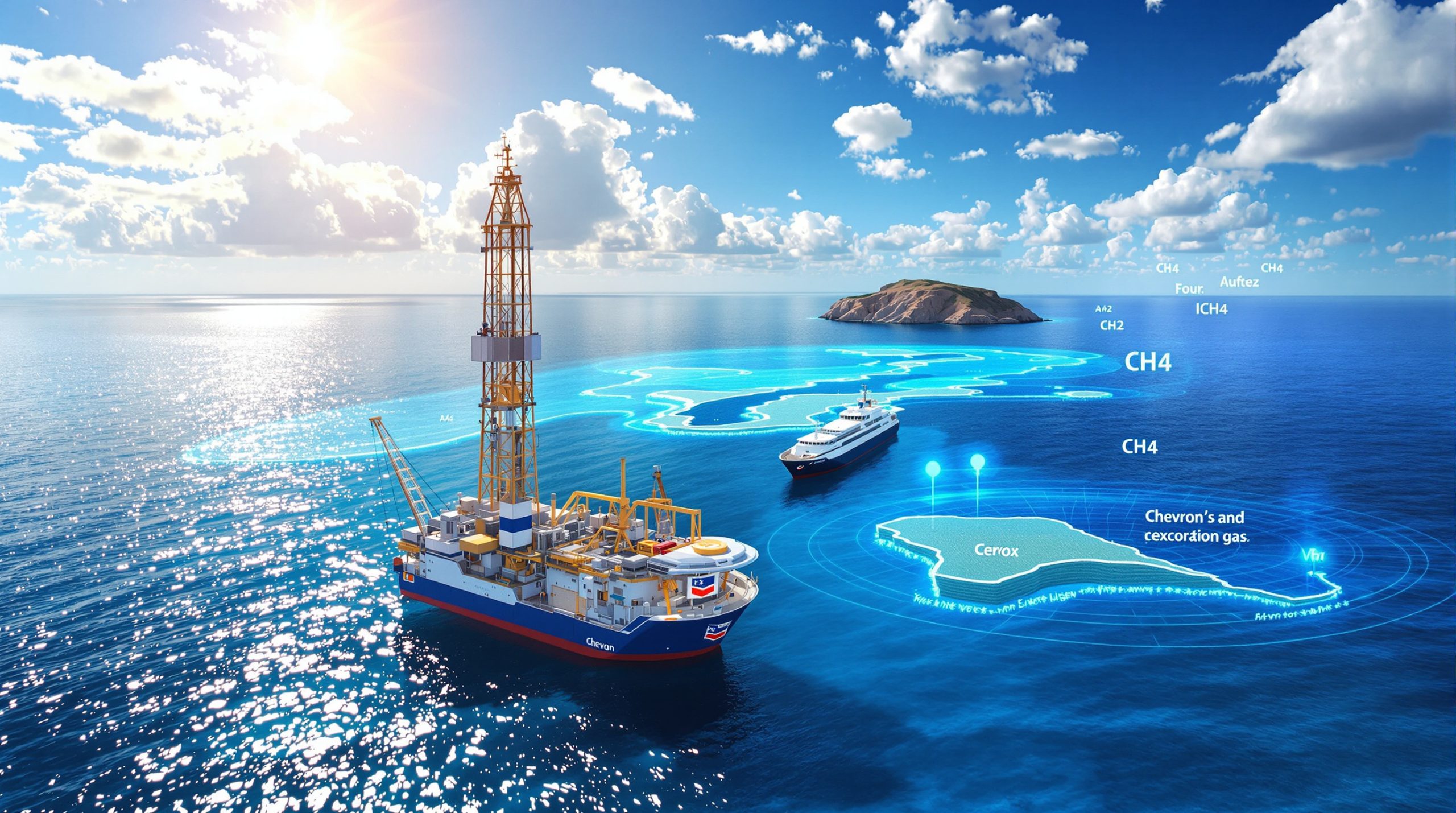What Is Driving the Current Tungsten Supply Chain Crisis?
The global tungsten supply chain faces unprecedented disruptions due to export restrictions imposed by China, which controls 86% of global production. With the United States lacking domestic primary tungsten mining for over a decade, recent trade tensions have exacerbated market tightness, driving price increases and highlighting vulnerabilities in defense and industrial sectors. This report analyzes the crisis, strategic implications, and emerging opportunities in alternative sourcing and integrated supply chains.
The Concentration Problem in Global Tungsten Production
Approximately 90% of global tungsten production originates from China, Russia, and North Korea, with China alone contributing 86%. This geographic concentration creates systemic risks, particularly for Western nations reliant on imports for defense applications. The U.S., which ceased primary tungsten mining over a decade ago, exemplifies this dependency.
Such consolidation in production mirrors historical vulnerabilities seen in rare earth elements, where supply chain shocks led to prolonged shortages. The tungsten market's vulnerability stems not only from production concentration but also from processing capabilities, where China maintains even greater dominance in refining raw ore into usable products.
Recent Export Restrictions and Their Impact
China's Ministry of Commerce recently designated tungsten as an "export restricted material," directly targeting the U.S. and allied nations. These measures, enacted weeks ago, have immediate repercussions: market tightness, insufficient material availability, and price volatility.
Industry stakeholders report accelerated procurement challenges, with buyers and sellers confirming constrained inventories. Manufacturing sectors dependent on tungsten carbide tools have begun implementing allocation systems similar to those used during previous materials shortages.
The restrictions align with broader geopolitical strategies, echoing past tactics in antimony markets where supply limitations triggered price surges. Analysts note that unlike previous trade tensions, these restrictions target a broader range of strategic minerals simultaneously, complicating diversification efforts.
Why Is Tungsten Considered a Critical Strategic Metal?
Defense and Military Applications
Tungsten's exceptional hardness (9.5 on the Mohs scale) and melting point (3,422°C) make it indispensable for armor-piercing ammunition, missile components, and aerospace alloys. Its classification as a critical defense material underscores its role in national security, with Western governments prioritizing supply chain resilience.
For instance, the U.S. Department of Defense has flagged tungsten shortages as a risk to ammunition production. Modern defense systems rely on tungsten's unique properties for kinetic energy penetrators, radiation shielding, and counterweights in aircraft stability systems. These applications have no viable substitutes, creating absolute dependency on stable tungsten supplies.
Industrial and Technological Uses
Beyond defense, tungsten is vital for cutting tools, industrial machinery, and high-temperature applications in electronics and renewable energy systems. Its unparalleled hardness makes tungsten carbide indispensable in mining, oil drilling, and construction equipment where durability under extreme conditions is paramount.
Emerging technologies, such as next-generation semiconductors and electric vehicle batteries, further amplify demand. The metal's role in the green energy transition—particularly in wind turbine manufacturing and nuclear reactor components—highlights its cross-sector importance.
In electronics manufacturing, tungsten's high thermal conductivity and dimensional stability make it critical for heat sinks, electrical contacts, and integrated circuit connections where reliability at high temperatures is essential.
How Are Supply Chain Disruptions Affecting the Tungsten Market?
Market Tightness and Price Dynamics
Current tungsten prices reflect early-stage escalation, akin to antimony's trajectory during its supply crunch. Market participants report a 20–30% price increase over recent months, with forecasts predicting sustained growth. This parallels rare earth element dynamics, where export controls led to multi-year price peaks.
Tungsten concentrate prices have climbed from approximately $270 per metric ton unit (mtu) to over $320/mtu in recent weeks, with ammonium paratungstate (APT) showing similar upward momentum. Industry analysts note that price volatility has been exacerbated by opaque trading practices and limited spot market liquidity.
Stockpiling behavior has emerged among major consumers, particularly in aerospace and defense sectors, further tightening available supply. Unlike previous market cycles, current disruptions coincide with decreased recycling rates, eliminating a traditional buffer against primary supply constraints.
Comparison to Other Critical Minerals
Tungsten's supply constraints mirror challenges in helium and copper markets, where geographic concentration and geopolitical factors drive volatility. For example, Australia's shift from helium exporter to importer after halting production illustrates similar vulnerabilities.
Meanwhile, copper's demand surge from electrification and AI infrastructure underscores the strategic interplay between critical minerals race dynamics. Tungsten faces a more acute challenge than many metals due to its limited substitutability in key applications—alternatives typically sacrifice performance or cost-effectiveness.
The antimony market provides a particularly relevant case study, where Chinese export restrictions led to price increases exceeding 200% over 18 months. Tungsten export restrictions and supply chain issues appear to be following a similar trajectory, with additional complexity due to its greater importance in high-tech applications.
What Are the Opportunities in Developing Alternative Tungsten Sources?
Exploration and Development Challenges
Developing non-Chinese tungsten deposits faces hurdles: long lead times (5–10 years), capital-intensive processing, and regulatory complexities. Junior mining firms, particularly in stable jurisdictions like Australia and Canada, struggle with funding despite recent capital market improvements.
Technical barriers, such as achieving metallurgical recovery rates above 75%, further complicate projects. Tungsten deposits often contain complex mineralogy requiring sophisticated beneficiation techniques to produce marketable concentrates. Skarn deposits, while relatively high-grade, present unique processing challenges compared to more straightforward vein-type deposits.
Environmental considerations add another layer of complexity, as tungsten processing typically involves flotation circuits and chemical treatments that require careful waste management. These factors contribute to development costs often exceeding $100 million for mid-sized operations, creating significant barriers to entry.
Integrated Supply Chain Approaches
Companies like First Phosphate exemplify success through vertical integration, linking mining to downstream processing and end-user partnerships. This model reduces logistical costs and enhances market responsiveness, with one executive noting, "We've pulled the mine forward into the whole downstream supply chain…synergistically tied to downstream cost advantages".
Such integration contrasts with traditional mining models, offering a blueprint for tungsten projects. Vertical integration creates strategic advantages through security of supply, quality control, and reduced exposure to spot market volatility. Companies pursuing this approach typically secure offtake agreements before commencing production, de-risking capital investments.
The most successful integrated models include joint ventures between miners and end-users, particularly in the carbide tool manufacturing sector. These arrangements provide technical expertise exchange and global commodities insights that pure mining operations typically lack, accelerating project development timelines.
How Are Companies Responding to Tungsten Supply Chain Risks?
Strategic Production Acceleration
Firms with existing resources, such as Cabral Gold, aim to shorten production timelines from 3–4 years to 2 years through secondary portal development and infrastructure leverage. Doubling production targets to 200,000 ounces annually could mitigate short-term deficits.
Companies with brownfield sites are prioritizing rapid restart capabilities over greenfield exploration. This approach leverages existing permits, infrastructure, and geological knowledge to bypass lengthy development phases. In several cases, operations mothballed during previous price downturns are being reassessed at current price points, with mining feasibility insights reflecting both improved economics and accelerated timelines.
Advanced exploration companies are shifting focus from resource expansion to fast-tracking preliminary economic assessments and prefeasibility studies. This strategic pivot recognizes the premium market currently places on near-term production potential versus long-term resource growth.
Funding and Capital Allocation
Increased investor interest in critical minerals has eased capital constraints, enabling self-funding mechanisms and government-backed initiatives. Strategic partnerships, like Equinox's merger with Cabral, highlight collaborative approaches to de-risking projects.
Government funding programs targeting supply chain security have emerged as significant capital sources, particularly in North America, Australia, and Europe. These initiatives frequently offer favorable financing terms, tax incentives, and regulatory fast-tracking for projects deemed strategically important to national security.
Corporate funding strategies increasingly incorporate offtake agreements with technology and defense sectors, providing development capital in exchange for future supply guarantees. This approach reduces reliance on volatile equity markets while creating strategic alignments with end-users invested in project success.
What Makes a Successful Tungsten Project in Today's Market?
Key Success Factors for Tungsten Developers
Successful projects require experienced management teams, jurisdictional stability, and proximity to infrastructure. For example, Cabral's team, responsible for Brazil's third-largest gold mine, underscores the importance of regional expertise. Additionally, resource scalability—such as expanding from 1.3 million to 5 million ounces—enhances investor confidence.
Grade quality emerges as a critical differentiator, with economic viability typically requiring concentrations above 0.3% WO₃ (tungsten trioxide) for open-pit operations and 0.6% for underground mines. Projects demonstrating consistent grades across substantial resource blocks attract premium valuations compared to those with variable mineralization.
Proximity to existing processing infrastructure represents another key advantage, as tungsten's relatively small market makes dedicated processing facilities economically challenging for individual projects. The ability to leverage regional processing capabilities can dramatically improve project economics.
Technical and Operational Considerations
Metallurgical recovery rates, environmental compliance, and community engagement are critical. Projects in the Democratic Republic of Congo (DRC) demonstrate the value of "shovel-ready" deposits with minimal environmental disruption.
Processing complexity varies significantly between tungsten deposit types, with scheelite typically offering simpler recovery pathways than wolframite. X-ray sorting technology has emerged as a game-changer for tungsten projects, allowing pre-concentration that reduces processing costs and improves overall recovery rates.
Water management represents a particular challenge for tungsten operations, with processing typically requiring 3-5 cubic meters of water per ton of ore processed. Projects in water-scarce regions must incorporate sophisticated recycling systems, adding capital and operational complexity.
Energy costs significantly impact project economics, with grinding and concentration accounting for approximately 65% of processing energy consumption. Operations with access to low-cost renewable energy demonstrate substantial operating advantages compared to those reliant on diesel generation or high-cost grid power.
How Does Tungsten Fit into the Broader Critical Minerals Landscape?
Comparison with Other Critical Minerals
Tungsten's geopolitical significance aligns with copper's role in electrification and helium's supply chain fragility. However, unlike iron ore's widespread distribution, tungsten's scarcity amplifies its strategic value.
Among critical minerals, tungsten occupies a unique position due to its irreplaceability in certain applications combined with extremely concentrated production. While rare earth elements face similar concentration issues, they typically offer potential substitution pathways that tungsten lacks in hardmetal applications.
The tungsten market's relatively modest size—approximately $4 billion annually—creates unique dynamics compared to larger metals markets. Price volatility tends to be more pronounced, and individual projects can exert outsized influence on global supply balances compared to commodities like copper or iron.
Geopolitical Dimensions of Tungsten Supply
The U.S.-China trade war has thrust tungsten into the spotlight, with the EU and Australia prioritizing diversification. Chile's pivot from oil to copper illustrates how nations leverage critical minerals for economic transformation, a model applicable to tungsten-rich regions.
Emerging producer nations, particularly those in Africa and South America, increasingly view tungsten as a strategic resource rather than simple commodity. This shift manifests in policy frameworks designed to capture more value domestically through processing requirements and export restrictions on unprocessed ore.
Russia's significant tungsten resources have become increasingly isolated from Western markets due to sanctions, further tightening global supply dynamics. This geopolitical fracturing accelerates the development of parallel supply chains aligned with regional political blocs rather than economic efficiency.
What Are the Long-Term Outlook and Investment Implications?
Supply-Demand Projections
Demand is expected to grow 4–6% annually, driven by defense and green technology. Limited new supply until 2030 suggests sustained price elevation, with early-stage explorers poised for valuation spikes.
Advanced manufacturing continues to drive increased tungsten intensity, with each generation of precision machinery requiring more sophisticated tungsten carbide tooling. Additive manufacturing particularly stands out, with tungsten powder demand for metal 3D printing growing at 15-20% annually from a small base.
Defense sector demand shows particular strength, with evolving battlefield requirements driving increased tungsten consumption in armor, ammunition, and reconnaissance systems. Budget allocations for defense modernization programs in NATO countries suggest this trend will accelerate through 2030.
Investment Considerations
Key metrics include jurisdictional risk, resource grade, and management track record. Investors should anticipate 5–10-year horizons for mine development, with catalysts like government subsidies accelerating timelines.
The tungsten investment landscape divides into near-term producers, typically brownfield restarts with 2-3 year horizons, and exploration plays targeting development in the 5-7 year range. The former offers lower risk profiles with constrained upside, while the latter presents higher risk-reward potential aligned with anticipated long-term supply deficits.
Capital intensity represents a critical evaluation factor, with successful projects typically demonstrating all-in costs below $50 million per 1,000 tonnes of annual production capacity. Operations exhibiting economies of scale through polymetallic revenue streams (commonly molybdenum, tin, or copper) offer enhanced resilience against tungsten price volatility.
For investors considering tungsten exposure, a comprehensive mining stocks guide can provide valuable insights on evaluating opportunities in this sector. Additionally, staying informed about mining industry predictions helps anticipate market shifts and strategic developments.
FAQ: Tungsten Supply Chain Concerns
What is tungsten primarily used for?
Tungsten's primary applications include cemented carbides (70% of consumption), defense systems, and high-temperature industrial processes. The carbide market alone accounts for nearly three-quarters of global consumption, with cutting tools representing the largest segment within this category.
In aerospace applications, tungsten alloys provide critical components for turbine engines, balancing weights, and radiation shielding. Electronic uses include heat sinks, electrical contacts, and integrated circuit connections where reliability at high temperatures is essential.
Emerging applications in energy storage systems, particularly solid-state batteries and supercapacitors, represent a potentially significant growth market over the coming decade, though currently accounting for less than 2% of consumption.
Why is China restricting tungsten exports?
China's restrictions reflect resource nationalism and strategic trade policies, aiming to bolster domestic industries and global pricing power. The policy aligns with China's broader "dual circulation" economic strategy, which prioritizes domestic value capture over raw material exports.
Environmental regulations have provided additional justification for production limits, with authorities citing water quality and tailings management concerns at older mining operations. This environmental emphasis dovetails with economic objectives while providing policy continuity regardless of international trade tensions.
The restrictions also serve to accelerate downstream manufacturing relocation to China, as multinational companies facing supply uncertainties increasingly establish production facilities within China to secure material access. This strategy effectively exports jobs and technology rather than raw materials.
How quickly can new tungsten mines be developed?
Advanced projects may reach production in 2–4 years, though greenfield sites typically require 5–10 years. The development timeline depends heavily on existing infrastructure, permitting status, and financing availability.
Brownfield restarts of previously operating mines offer the fastest path to production, potentially as short as 18-24 months for facilities with maintained infrastructure. These operations benefit from existing permits, established processing flowsheets, and known metallurgical characteristics.
Greenfield developments face substantially longer timelines, with permitting alone often requiring 3-5 years in Western jurisdictions. Water rights acquisition, power infrastructure development, and community agreements represent critical path items frequently overlooked in preliminary timeline estimates.
What countries have untapped tungsten resources?
Australia, Canada, and Brazil host significant reserves, with historical mines offering revival potential. The United Kingdom's Hemerdon project represents Europe's largest tungsten resource, though operational challenges have complicated development efforts.
Portugal and Spain maintain Europe's most significant producing operations, with expansion potential limited primarily by permitting complexities rather than resource constraints. These jurisdictions benefit from established processing expertise and supportive industrial policies.
Canada's Northwest Territories contains several promising deposits currently advancing through exploration, with preliminary economic assessments highlighting favorable grade characteristics compared to global averages. These projects benefit from established mining codes and infrastructure support programs despite challenging arctic operating conditions.
Ready to Discover the Next Major ASX Mineral Opportunity?
Gain real-time alerts on significant ASX mineral discoveries powered by Discovery Alert's proprietary Discovery IQ model, turning complex data into actionable investment insights. Explore how historic discoveries have generated substantial returns by visiting Discovery Alert's dedicated discoveries page.




